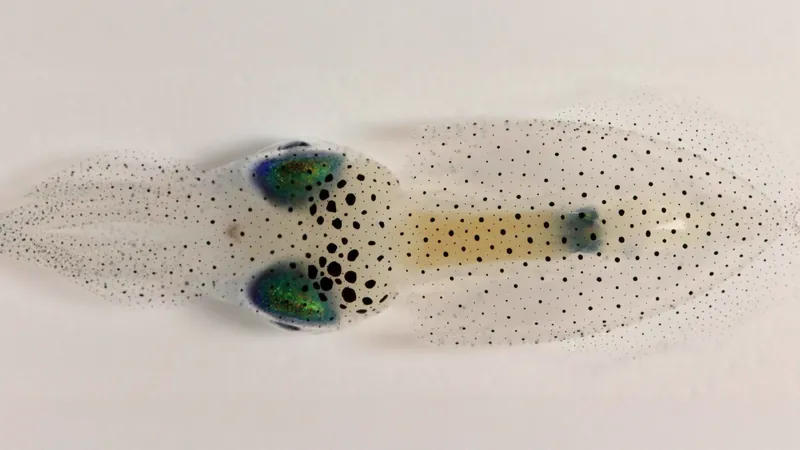
Unlocking the Secrets of Squid: How Interdisciplinary Research Reveals the Physics of Growth
2025-06-03
Author: Mei
A Groundbreaking Discovery in Biological Physics
In a remarkable fusion of biology and physics, researchers have turned their attention to squid skin, uncovering a fascinating phenomenon known as "hyperdisorder." This revolutionary study, published in the esteemed journal Physical Review X, signals a shift in the way scientists can gain insights from living systems—by examining how they grow and develop.
The Squid Study: Methodology and Findings
An interdisciplinary team from the Okinawa Institute of Science and Technology (OIST) employed cutting-edge imaging techniques alongside theoretical models to explore the intricate patterns within squid skin cells. Their research unveiled a unique cellular arrangement that challenges previous understandings of biological order and disorder.
Hyperdisorder Explained: Growth and Patterns
Hyperdisorder is a complex concept where variations in the arrangement of cells increase faster than the space they occupy. At a microscopic level, the squid’s skin appears orderly, but this uniformity crumbles under broader scrutiny. Dr. Robert Ross, OIST’s Interdisciplinary Postdoctoral Scholar and lead writer of the study, explained that while other growing systems, like chicken eye cells, display a type of long-range order known as hyperuniformity, squid skin exhibited a disorder never before observed in biological contexts.
Inside the Squid: Chromatophores and Their Role
For over 12 weeks, researchers meticulously studied the squid's development, focusing on chromatophores—specialized cells crucial for camouflage and communication. These cells’ unique spatial arrangement plays a vital role in their function, prompting the scientists to delve deeper into how these patterns emerge during growth.
The Mathematical Model: Simplifying Complexity
To decipher the physics of hyperdisorder, the team designed an innovative mathematical model simulating hard disks on a growing surface to represent squid skin behavior. Despite the complexities involved, they successfully crafted a straightforward, broadly applicable model that can extend beyond squid to a range of biological and non-biological systems.
Looking Ahead: The Future of Interdisciplinary Research
Co-author Professor Simone Pigolotti emphasized the transformative potential of this research, indicating that it showcases how growth significantly influences physical properties across various systems. The simplicity and versatility of their model open up countless avenues for future scientific exploration. The study not only contributes to our understanding of squid biology but also paves the way for new interdisciplinary approaches that could revolutionize our perception of growth in nature.


 Brasil (PT)
Brasil (PT)
 Canada (EN)
Canada (EN)
 Chile (ES)
Chile (ES)
 Česko (CS)
Česko (CS)
 대한민국 (KO)
대한민국 (KO)
 España (ES)
España (ES)
 France (FR)
France (FR)
 Hong Kong (EN)
Hong Kong (EN)
 Italia (IT)
Italia (IT)
 日本 (JA)
日本 (JA)
 Magyarország (HU)
Magyarország (HU)
 Norge (NO)
Norge (NO)
 Polska (PL)
Polska (PL)
 Schweiz (DE)
Schweiz (DE)
 Singapore (EN)
Singapore (EN)
 Sverige (SV)
Sverige (SV)
 Suomi (FI)
Suomi (FI)
 Türkiye (TR)
Türkiye (TR)
 الإمارات العربية المتحدة (AR)
الإمارات العربية المتحدة (AR)